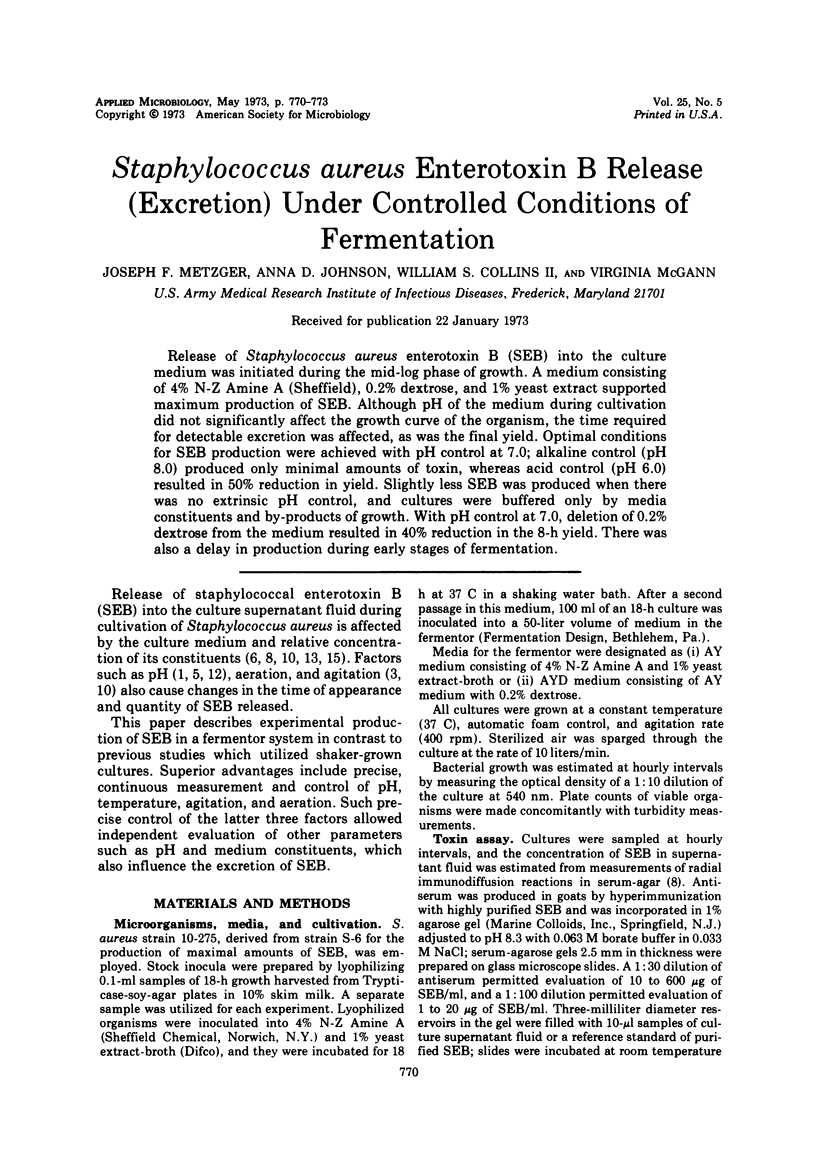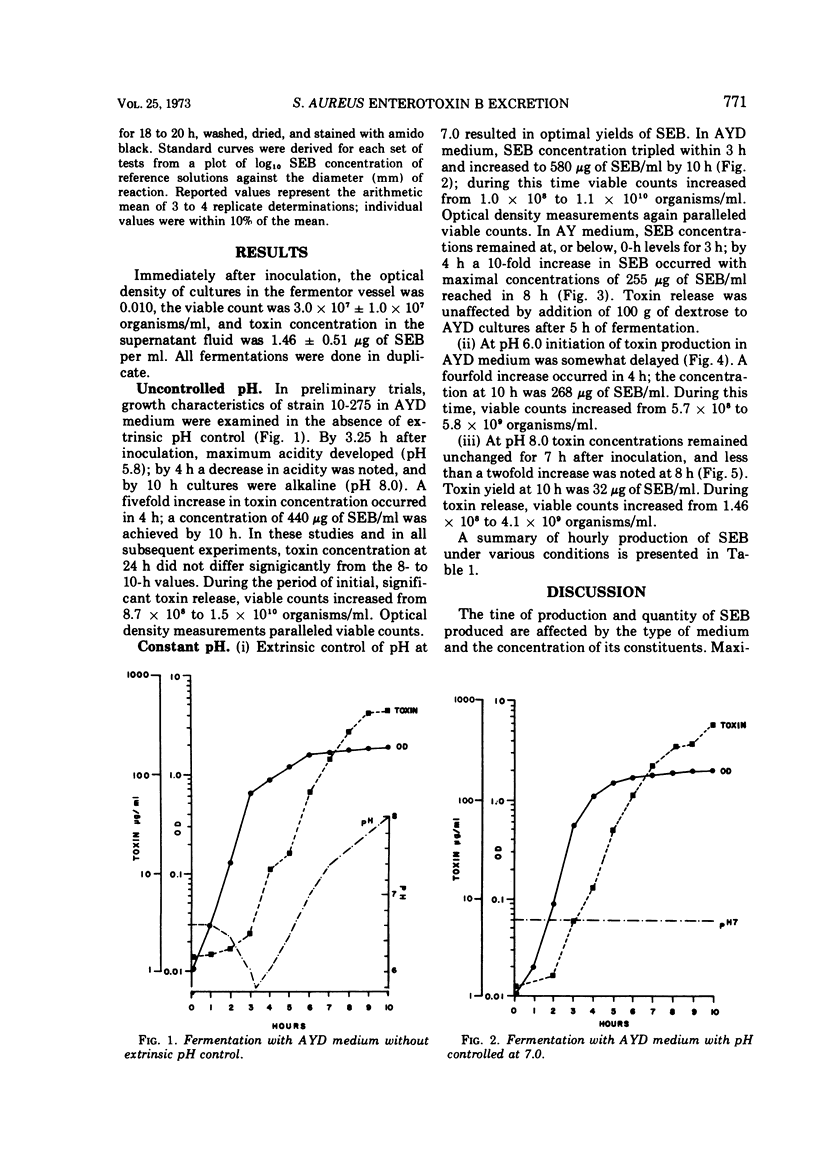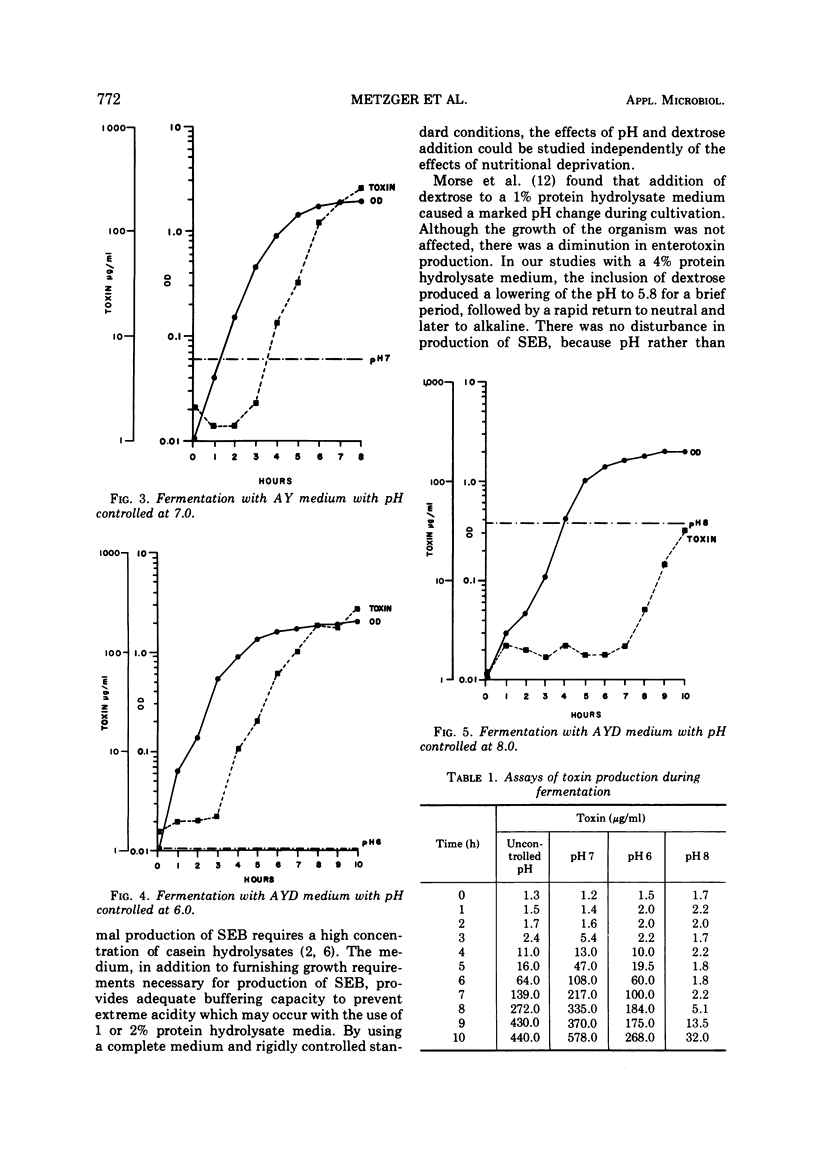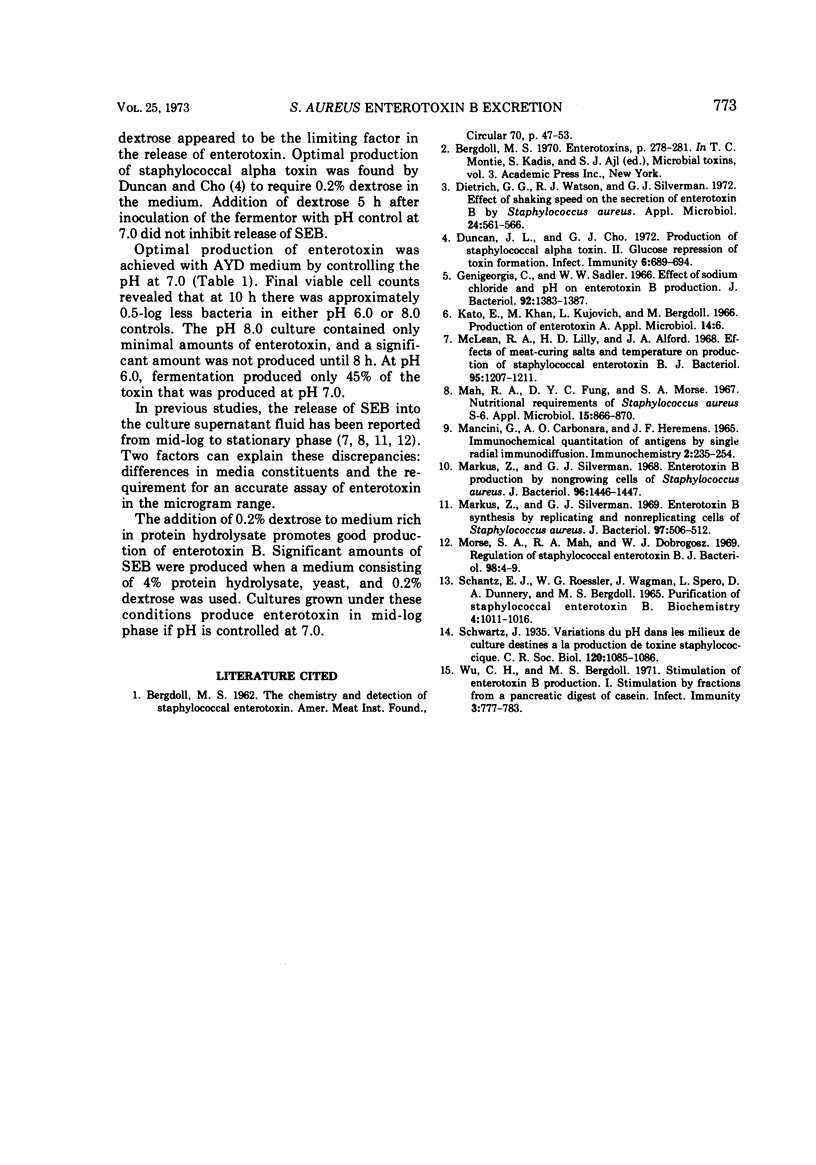Abstract
Release of Staphylococcus aureus enterotoxin B (SEB) into the culture medium was initiated during the mid-log phase of growth. A medium consisting of 4% N-Z Amine A (Sheffield), 0.2% dextrose, and 1% yeast extract supported maximum production of SEB. Although pH of the medium during cultivation did not significantly affect the growth curve of the organism, the time required for detectable excretion was affected, as was the final yield. Optimal conditions for SEB production were achieved with pH control at 7.0; alkaline control (pH 8.0) produced only minimal amounts of toxin, whereas acid control (pH 6.0) resulted in 50% reduction in yield. Slightly less SEB was produced when there was no extrinsic pH control, and cultures were buffered only by media constituents and by-products of growth. With pH control at 7.0, deletion of 0.2% dextrose from the medium resulted in 40% reduction in the 8-h yield. There was also a delay in production during early stages of fermentation.
Full text
PDF



Selected References
These references are in PubMed. This may not be the complete list of references from this article.
- Dietrich G. G., Watson R. J., Silverman G. J. Effect of shaking speed on the secretion of enterotoxin B by Staphylococcus aureus. Appl Microbiol. 1972 Oct;24(4):561–566. doi: 10.1128/am.24.4.561-566.1972. [DOI] [PMC free article] [PubMed] [Google Scholar]
- Duncan J. L., Cho G. J. Production of staphylococcal alpha toxin. II. Glucose repression of toxin formation. Infect Immun. 1972 Nov;6(5):689–694. doi: 10.1128/iai.6.5.689-694.1972. [DOI] [PMC free article] [PubMed] [Google Scholar]
- Genigeorgis C., Sadler W. W. Effect of sodium chloride and pH on enterotoxin B production. J Bacteriol. 1966 Nov;92(5):1383–1387. doi: 10.1128/jb.92.5.1383-1387.1966. [DOI] [PMC free article] [PubMed] [Google Scholar]
- Mah R. A., Fung D. Y., Morse S. A. Nutritional requirements of Staphylococcus aureus S-6. Appl Microbiol. 1967 Jul;15(4):866–870. doi: 10.1128/am.15.4.866-870.1967. [DOI] [PMC free article] [PubMed] [Google Scholar]
- Mancini G., Carbonara A. O., Heremans J. F. Immunochemical quantitation of antigens by single radial immunodiffusion. Immunochemistry. 1965 Sep;2(3):235–254. doi: 10.1016/0019-2791(65)90004-2. [DOI] [PubMed] [Google Scholar]
- Markus Z., Silverman G. J. Enterotoxin B production by nongrowing cells of Staphylococcus aureus. J Bacteriol. 1968 Oct;96(4):1446–1447. doi: 10.1128/jb.96.4.1446-1447.1968. [DOI] [PMC free article] [PubMed] [Google Scholar]
- Markus Z., Silverman G. J. Enterotoxin B synthesis by replicating and nonreplicating cells of Staphylococcus aureus. J Bacteriol. 1969 Feb;97(2):506–512. doi: 10.1128/jb.97.2.506-512.1969. [DOI] [PMC free article] [PubMed] [Google Scholar]
- McLean R. A., Lilly H. D., Alford J. A. Effects of meat-curing salts and temperature on production of staphylococcal enterotoxin B. J Bacteriol. 1968 Apr;95(4):1207–1211. doi: 10.1128/jb.95.4.1207-1211.1968. [DOI] [PMC free article] [PubMed] [Google Scholar]
- Morse S. A., Mah R. A., Dobrogosz W. J. Regulation of staphylococcal enterotoxin B. J Bacteriol. 1969 Apr;98(1):4–9. doi: 10.1128/jb.98.1.4-9.1969. [DOI] [PMC free article] [PubMed] [Google Scholar]
- Schantz E. J., Roessler W. G., Wagman J., Spero L., Dunnery D. A., Bergdoll M. S. Purification of staphylococcal enterotoxin B. Biochemistry. 1965 Jun;4(6):1011–1016. doi: 10.1021/bi00882a005. [DOI] [PubMed] [Google Scholar]
- Wu C. H., Bergdoll M. S. Stimulation of enterotoxin B production I. Stimulation by fractions from a pancreatic digest of casein. Infect Immun. 1971 Jun;3(6):777–783. doi: 10.1128/iai.3.6.777-783.1971. [DOI] [PMC free article] [PubMed] [Google Scholar]


